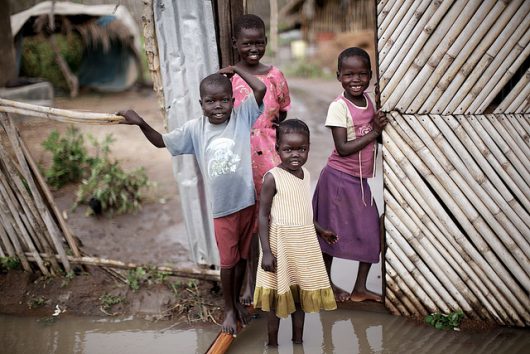How Safe Spaces Help Children In Extreme Poverty

“Safe spaces” are places or environments in which people can feel confident that they will not be exposed to discrimination, criticism, harassment or any other emotional or physical harm. Often, safe spaces are discussed with respect to American colleges. However, psychological aid and safe spaces help children in developing countries as much as food and water. Here are therapeutic success stories from around the globe.
Bangladesh
The South Asian country became host to hundreds of thousands of child refugees from Rohingya. In addition to basic survival needs, UNICEF has provided Bangladesh’s children with facilities for psychological therapy. Trained therapists have become just as vital as Art Corners in providing refugee kids a childhood. “I try to heal them by talking about their drawings,” said counselor Mosammat Mili Akhter in an interview with Al Jazeera.
In the UNICEF guide to developing Child-Friendly Spaces (CFS), the organization highlights the importance of providing toys and art supplies. After a disaster, reasons UNICEF, children lack social settings and avenues for play, which are essential for developing resilience and dignity.
Nepal
Children can be just as devastated by material loss as adults. When a magnitude 7.8 earthquake struck Nepal in 2015, many families lost everything. World Vision set up CFS centers to give kids an escape from local chaos. Volunteers led children in drawing, coloring, singing and puzzle solving.
Young victims in an emergency, according to UNICEF, lose their routines and social protection networks in addition to their possessions. Emergencies affect children’s cognitive and emotional development. These safe spaces help children overcome trauma and become self-sufficient later in life.
Arpanah Rongong, the child protection specialist working for World Vision, defended devoting resources to entertaining children instead of just feeding them. “It’s important for the children to get back to a schedule, and to have something they can enjoy that they know is going to happen at a certain time each day,” said Rongong.
Uganda
The safe center set up by the Christian Children’s Fund in Northern Uganda not only gives children a place to play, but it also teaches children about basic hygiene and nutrition. A comparative study of two camps, one with a safe center and one without, proved that safe spaces help children in extreme poverty. According to UNICEF, “children who had participated in the CFS seemed more prepared to return to school and less violent with other children.”
UNICEF adds that the Uganda CFS center was designed to support adolescents aged seven to 13, though it was soon adapted to help younger children. This discovery suggests that therapy is a useful tool for trauma survivors of any age. These safe spaces help children with the power to match the most generous charity donation.
– Nick Edinger
Photo: Flickr
